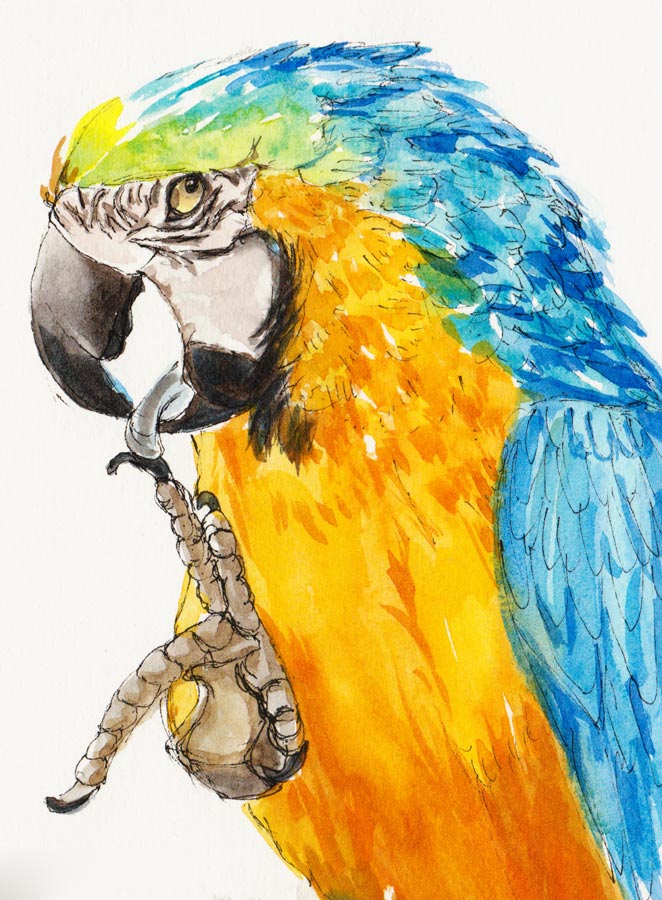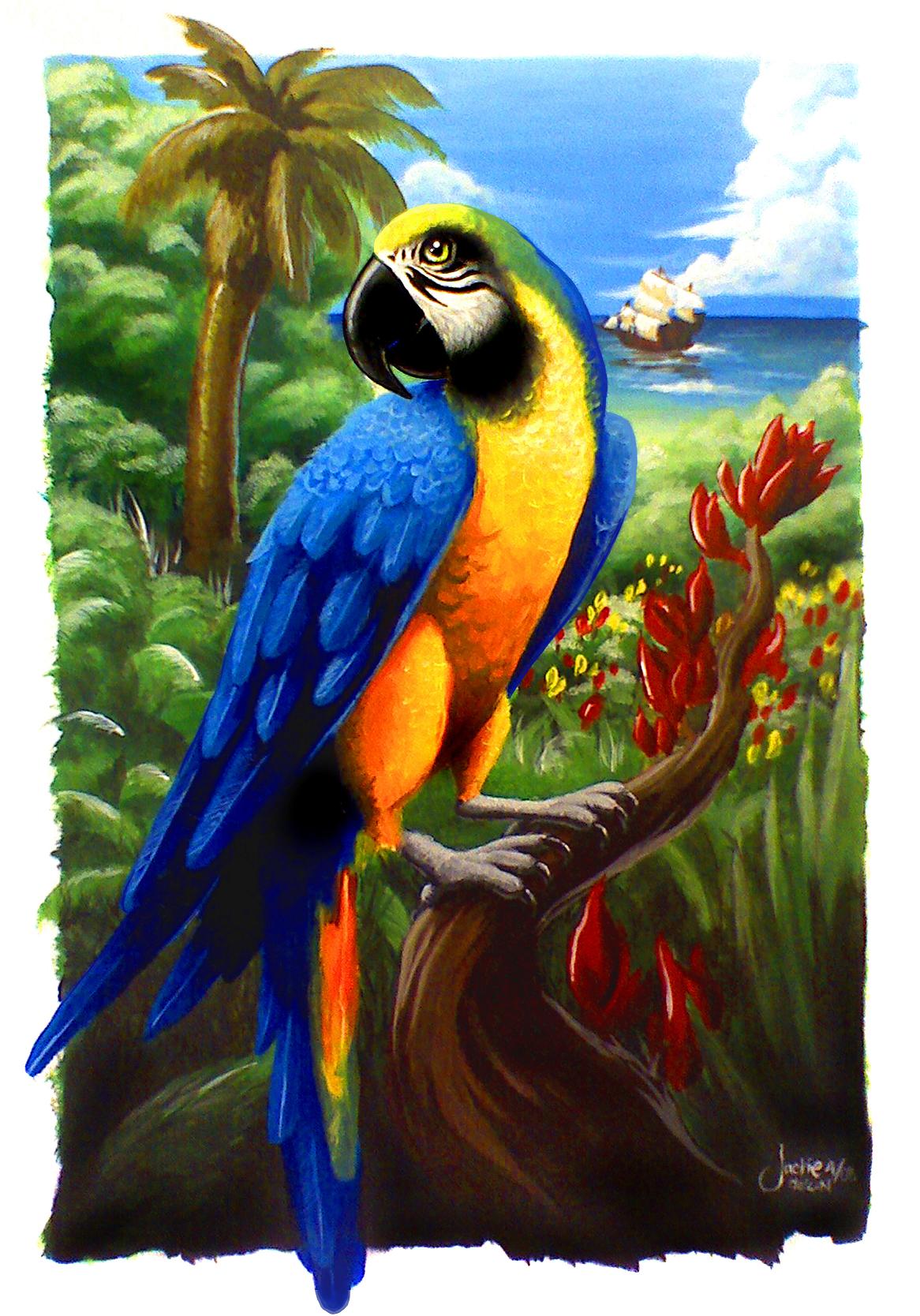
Pyrrhura picta
SUBFAMILY
Psittacinae
TAXONOMY
Psittacus picta P. L. S. Mьller, 1776, Cayenne. Nine subspecies.
OTHER COMMON NAMES
English: Painted conure; French: Conure versicolore; German:
Rotzьgelsittich; Spanish: Cotorra Pintada.
PHYSICAL CHARACTERISTICS
8.7 in (22 cm); 1.9–2.5 oz (54–70 g). Polytypic species with
strong geographical variation in plumage patterns of head and
breast.
DISTRIBUTION
P. p. picta: Venezuela through Guianas to Amapб, north Brazil.
P. p. amazonum: north-central Brazil, north of Amazon
River. P. p. microtera: north-central Brazil, south of Amazon
River. P. p. lucianii: northwest Brazil and southeast Ecuador to
northeast Peru and north Bolivia. P. p. roseifrons: east of range
of lucianii in west Brazil and east Peru. P. p. subandina: Sinъ
River valley, northwest Colombia; probably separate species.
P. p. caeruleiceps: western slopes of East Andes, north Colombia;
possibly separate species. P. p. pantchenkoi: Sierra de Perijб,
Colombia-Venezuela border. P. p. eisenmanni: Azuero Peninsula,
Panama; possibly separate species.
HABITAT
Lowlands and foothills. Closely associated with moist, evergreen
forest, though occurring also in dense savanna woodland,
cloud forest, and partly cleared areas; favors lower stages in interior
of forest rather than margins or secondary growth.
BEHAVIOR
Sedentary, but some local altitudinal movements. Pairs, family
parties, or flocks of up to 20 birds; inconspicuous while foraging
in lower to upper stages of forest; in dry season bathes regularly
at favored watering places; emits shrill “eek” call-notes
while in swift, direct flight; where sympatric, gives way to
larger crimson-bellied parakeet (Pyrrhura perlata); nighttime
roosting in tree hollows.
FEEDING ECOLOGY AND DIET
Feeds arboreally, taking seeds, nuts, fruits, berries, flowers, and
possibly insect larvae; also seen taking algae from surface of
deep pools; comes to the ground to take mineralized clay.
REPRODUCTIVE BIOLOGY
Monogamous. Breeding season varies geographically throughout
extensive range, but mainly January to June in north and
June to September in south. Nest in tree hollow; in captivity,
clutch of four or five eggs.
CONSERVATION STATUS
Generally common, but locally scarce and declining because of
deforestation; subandina possibly extremely rare. Listed on
CITES Appendix II.
SIGNIFICANCE TO HUMANS
Some localized trapping for live-bird trade.
Photo Gallery of - Painted parrot




 Animalia Life
Animalia Life